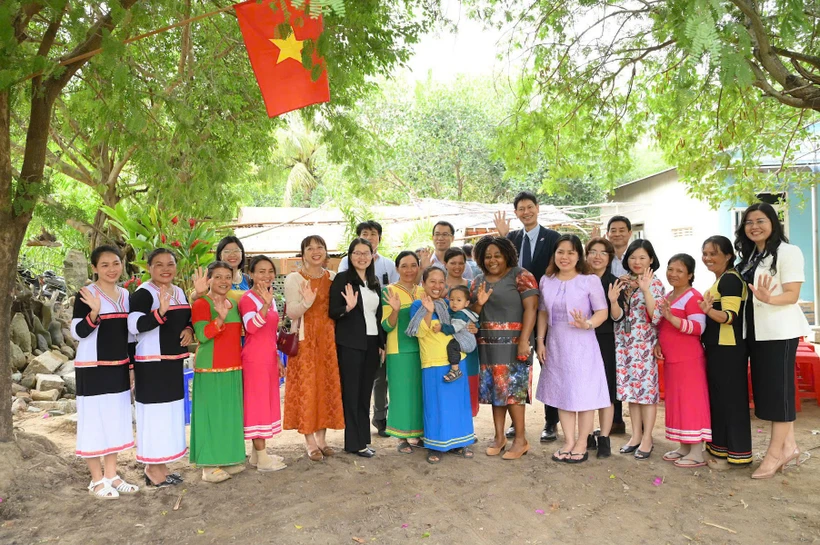HCMC – More than 10,000 people in Ninh Thuan and Ca Mau provinces have gained improved access to clean water through a project led by UN Women and funded by the Japanese government.
The “Water is Life” initiative, implemented by local women’s unions, provided water infrastructure in 2024-2025. The project supplied water systems to over 1,500 women, 10 schools, and local healthcare centers. It also trained 60 community groups to strengthen their resilience against drought and saltwater intrusion.
The initiative promoted sustainability by addressing gender-based violence and economic security. It aimed to improve access to clean water while supporting livelihoods.
At the project’s closing ceremony in Ninh Thuan Province, beneficiaries, government officials, and representatives from UN Women and the Japanese Embassy reviewed its impact. To Thi Nhu Nga, a recipient, said the new infrastructure allowed her to install irrigation systems for crops, the Vietnam News Agency quoted Nga as saying.
Sasaki Shohei, first secretary of the Japanese Embassy, said the initiative aligned with the 30th anniversary of the Beijing Declaration on gender equality. He called it a model for economic empowerment and climate resilience.
Women are disproportionately affected by climate change due to their role in securing food, water, and energy, according to UN Women. The agency reported that in households without piped water, women and girls collect water 80% of the time, increasing health and safety risks.
Vietnam faces worsening climate-related disasters. Saltwater intrusion affects 40% of the Mekong Delta, leaving 1.5 million people without reliable water each year. Women, particularly those in poverty, bear the heaviest burden.
The “Water is Life” initiative distributed water tanks, filtration systems, and irrigation tools. It also promoted sustainable water management.
Caroline Nyamayemombe, a representative of the UN Women in Vietnam, said water scarcity and drought would continue. However, she said solutions from the initiative could be a solid foundation to expand the program to other high-risk areas.









